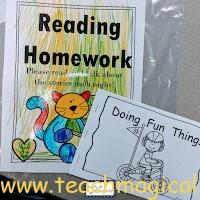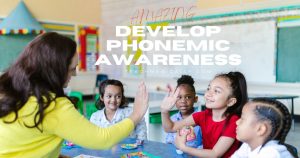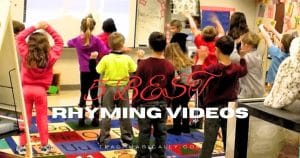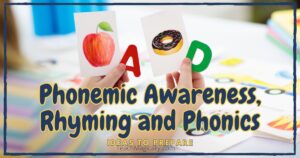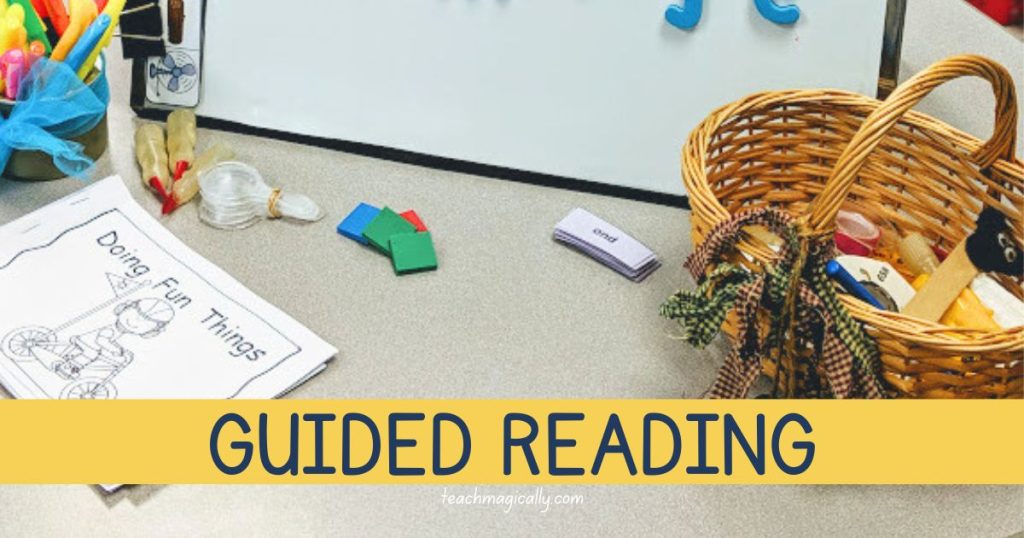
Teaching and structuring a guided reading lesson can seem overwhelming at first. Watching upper grade models don’t fit well for beginning kindergarten readers. Eventually, I figured out the best way to teach guided reading for kindergarten kiddos using leveled beginning readers. Then my groups were rocking and rolling!
Every classroom is different and there might be something else that works best for you and your students, but overall, these are areas for guided reading, a time for teachers to help students read at a level that’s not too easy or too difficult!
Setting Up for a Guided Reading Lesson
Supplies Needed:
- table top easel to write on and/or create magnetic words,
- sight word cards learned so far,
- alphabet chart,
- highlighters,
- squares to segment (or any small pieces of candy), pointer fingers,
- “spy” lenses,
- a quick game (a focus for phonological awareness or word work)
- something to hold all supplies. . I also make sure that I have the set of leveled readers for that group on hand.
Guided Reading Warm Up for Kindergarten
I have 3-5 books we have already read out on the table or from their “Reading Bags”. They are taught to whisper read and to point to each word. Once they have one to one mastered, they remove their fingers and practice reading fluently.
Good Reading:
- looked at the picture
- reread because it didn’t look right
- reread because it didn’t sound right
- reread because it didn’t make sense
- started again because the words didn’t match to pointing
- said the sounds and made them touch (sounding out)
- spelled the word (this helps beginning readers know sight words)
Word Work for Guided Reading
If they are reading below A we read the alphabet book. Check out Teaching Beginning Readers to see how I use these books.
Others Levels Word Work:
- sorting alphabet letters in order
- segmenting using sound or letter boxes
- practicing sight words with games or finding them in the text
- writing a known sight word 3 times fast then reading it 3 times fast
- practicing sight words
- changing letters to make new words
Book Introduction
I would prompt them to make connections and help them predict what they may read about as we take a picture walk through each page.
I would allow the students to share and introduce anything that might catch them off guard. We might even choral read a sentence that is on each page.
I then have the students independently read the book aloud in a whisper voice. We may also use whisper phones.
I also listen to someone read and take a running record and record observations to celebrate. I keep a “Celebration” sheet as an anecdotal record. It really helps with report cards and IEP meetings.
Book Summary/ Comprehension Skill
Sometimes we do this by doing a 5 finger retell, retelling with a simple beginning, middle, end retell, or by talking about characters, setting, problem, and solution for fiction books.
For nonfiction, we talk about what we learned.
We always look back through the book and support our thoughts with the words or try to make connections. This all just depends on their level.
You can check my 4 Fun Reading Strategies for a few ideas.
Writing about Reading
- write 1 sentence to tell what happened in the story
- make a list of things from the story
- write about a connection made with the text
- rewrite a sentence that was repeated
I write on white board as a model. Depending on the time of year, we would do interactive writing (beginning), copy (once they have fluent handwriting), independent writing (end of year).
Students Take Book Home to Practice Reading
It does take time and practice so don’t be discouraged!
I love when the kiddos say, “My favorite part of kindergarten was working at your table.”
I hope this helps you with guided reading.
Teach Magically,
Debora
Here are few resources I use:
Emergent Readers
Alphabet Sight Word Poems









